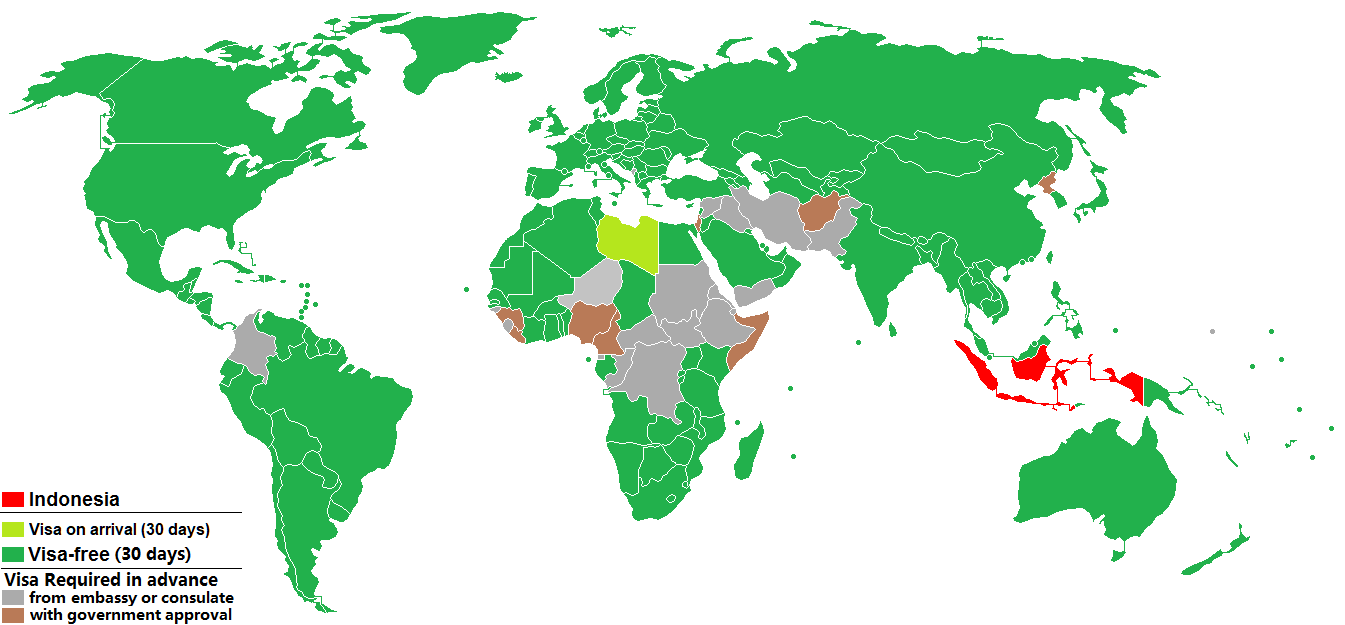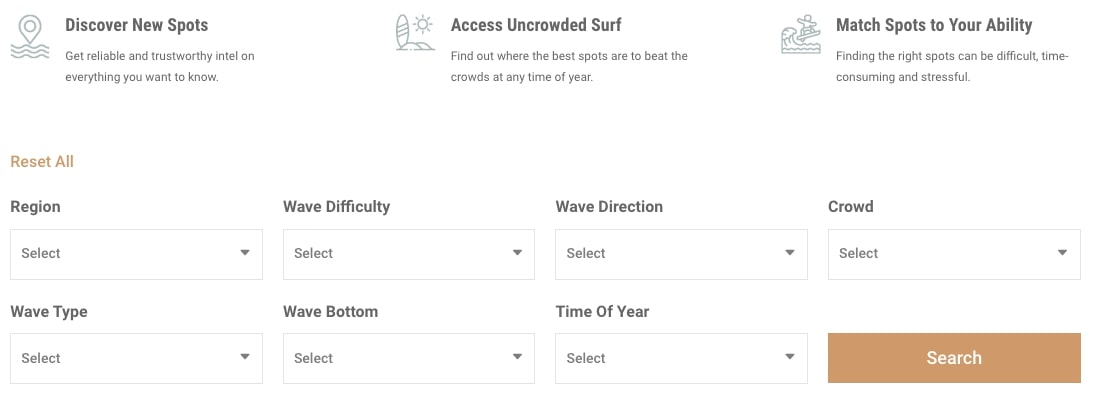Dreaming of embarking on a surf trip to Bali?
Look no further!
With its breathtaking beaches, warm waters, and world-class surf breaks, Bali is a surfer’s paradise.
Whether you’re a seasoned pro or a beginner looking to catch your first wave, this Indonesian island offers an incredible surfing experience.
In this comprehensive guide, we’ll cover everything you need to know about planning your trip, including costs, surf seasons, wave conditions, finding the right spots, packing essentials, safety considerations, and more.
Get ready for the ultimate surf trip to Bali!
1. Tips for Planning Your Trip to Bali
Planning a surf trip to Bali requires some careful preparation. Here are a few quick tips to ensure a smooth and enjoyable experience:
- Research the best surf spots in Bali based on your skill level and preferences.
- Check the visa requirements (more below) and ensure your passport is valid for at least six months.
- Book accommodations close to the surf breaks you wish to explore.
- Learn about local customs, traditions, and etiquette to show respect to the Balinese culture.
2. How Much Does a Surf Trip to Bali Cost?
The cost of a surf trip to Bali can vary depending on your preferences and travel style. From the shoestring surfer paying just a few dollars per night to the once in a ‘life-timer’ ready to blow their bank accounts on the ultimate Bali surf trip, everyone can plan a trip to suit their budget in Bali.
Here are some approximate on-average expenses to consider:
- Accommodations: You can find a range of options, from budget-friendly homestays to luxury villas. Budget around $30-$100 per night.
- Food: Local warungs (restaurants) offer affordable meals, and street food is also popular. Plan to spend around $20-$30 per day.
- Transportation: Renting a scooter is a convenient and cost-effective way to get around Bali. Budget around $5-$10 per day depending on how long you are renting the scooter. The longer you rent a scooter the cheaper the daily rate.
- Surf Lessons: If you’re a beginner, we highly recommend taking surf lessons. Prices can range from $20-$50 per lesson.
3. Surf Seasons in Bali
Bali enjoys consistent surf throughout the year, but there are two primary seasons to consider: the dry season (April-October) and the wet season (November-March). Both seasons offer great surfing conditions, but there are some differences to note.
Waves in the Dry Season
During the dry season, Bali experiences offshore winds, which create clean and perfect waves. The west coast of Bali, including spots like Uluwatu, Padang Padang, Bingin, and Kuta Beach offers world-class waves. The dry season is known for its consistent swell, making it a favorite among experienced surfers.
Waves in the Wet Season
In the wet season, the east coast of Bali, including spots like Keramas and Nusa Dua, come alive with incredible waves. While the weather can be more unpredictable with occasional rain showers, the wet season brings fun swells and a few less crowded lineups.
4. Can You Surf in Bali as a Beginner?
Absolutely!
Bali caters to surfers of all skill levels, including beginners. Beach breaks such as Kuta, Legian, and Canggu offer gentle waves and sandy bottoms, ideal for learning and improving your skills.
Consider taking surf lessons from qualified instructors to ensure a safe and enjoyable experience.
5. How to Decide Which Waves Match Your Ability
It’s essential to choose surf breaks that match your skill level to maximize your enjoyment and safety.
Important factors to consider include:
- wave bottom (reef vs sand),
- wave difficulty (beginner vs Advanced),
- wave conditions,
- Etc.
Do comprehensive research on the surf spots you are considering surfing before you go. There is a tonne of information out there so take advantage of a website like this one to source reliable local knowledge on the spots throughout Bali.
If you’re a Full Access Member of our website you can utilize the Spot Finder to filter surf spots based on your own personal preferences to find out everything you want to know including the best accommodation and how to get there.
6. Booking Accommodation Ahead vs Booking In Person
The conundrum of whether to book the bulk of your stay or only the first few nights before arriving is a real challenge for surfers heading to Bali. Booking most of your accommodation beforehand offers peace of mind, however, there are some risks:
- Surf reports can only be accurately forecasted a week or so in advance.
Construction is always in full swing and the quiet street you stayed on last year would’ve changed. - Some accommodations may neighbor resident dogs that howl through the night. The Balinese are generally undisturbed by nightly howling, as they believe the dogs are trying to redeem themselves in their new incarnation by trying to frighten away evil spirits.
- Online photos of accommodation in Bali are often altered to make them look more appealing.
What Veteran Surfers Do
Most well-traveled surfers book the first few nights of their trip, then if a place meets expectations – and the surf is cranking – they extend their stay. This approach gives you:
- The flexibility to change accommodation after checking out the area in person.
- The advantage of being able to move around and chase better surf.
It’s worth noting that if you’re staying in a hotel and you wish to extend, you’ll most likely be asked to book online. Bali is one of the few places where hotels prefer you to book online rather than at reception (even when they pay a commission) due to the intense competition between hotels on travel sites.
In general, surfers will leave their accommodation options wide open so they can check online surf reports and make a decision based on where the waves are. If the surf isn’t up to much, they’ll head somewhere nice to chill and or hit the party scene in areas like Canggu or Seminyak.
Tip: Popular accommodations will be booked out well in advance, especially during the peak season from May-September. Even more so for places with immediate access to the best surf breaks.
Final Rule of Thumb:
- If you’re committed to an area and want to stay somewhere specific, be sure to book it well in advance.
- If you want to be flexible, chase the surf, and aren’t too fussed about where you sleep, only book what you have to ahead of time!
7. Veteran Tips On Arrival
Fast Track Service “VIP” Through Immigration On Arrival
A common practice by seasoned travelers to Bali was to approach people hanging around the immigration area who collected bribes from those who were willing to pay for a shortcut (more commonly termed “Express” or “VIP”) through immigration. They would get you processed through the citizen or diplomatic channels, skipping the long line of arrivals queuing up, and distributing part of the bribe to the officials there.
Today there is a legitimate commercial option through The Bali Concierge where you prepay for the official fast-track service. The cost is around 500,000 IDR and can very well save you an hour or two if the arrivals hall is jam-packed. For some, this isn’t worth the cost, considering the immigration process is relatively quick since Indonesia introduced the free 30-day visa on arrival, (for most nationalities), and also…there’s always a wait for your bags.
With so many flights from all corners of the world coming into Bali, and multiple flights delayed daily, you can never really know just how busy the arrivals hall is going to be.
Visas On Arrival (‘Free 30-Day Visa’ or Paid ‘30-Day Visa’)
Travelers often get confused as to why there is the option to buy a ‘30-Day Visa’ on arrival in the arrivals hall before lining up to go through immigration when they get a ‘Free 30-Day Visa’ on arrival when going through immigration anyway. This is because the ‘Free 30-Day Visa’ on arrival cannot be extended.
Therefore, if you want to extend your stay in Indonesia beyond 30 days you must purchase a ‘30 Day Visa’ on arrival which can then be extended for an additional 30 days – giving you 60 days total in Indonesia.
- You can only extend your paid ‘30-Day Visa’ at an immigration office that is not located at the airport.
- Visa extension agents such as Bali Visas provide a good service to help you speed up the process. The number of times you have to visit the immigration office is reduced as they’ll drop your passport off and pick it up for you. However, you will still need to visit the immigration office once in between.
- You’ll pay a penalty of 1,000,000 IDR per day if you overstay.
- Citizens from the countries displayed in green below are able to receive a ‘Free 30-Day Visa’ automatically or can purchase a ‘30-Day Visa’ on arrival.

60-Day Tourist Visa
If you want to stay longer than 30 days without having to extend your paid ‘30-Day Visa,’ or pay for flights to do a visa run, (flying out and back into Indonesia to get another ‘Free 30-Day Visa’) apply for a ‘60-Day Tourist Visa’ well before you travel.
- A ‘60-Day Tourist Visa’ is a single entry visit visa for tourism or recreational activities.
- It’s straightforward to obtain through an Indonesian embassy within your own country before you go.
Believe me; this process is much more straightforward than going through the procedure while in Indonesia. We have done both multiple times and organizing a ‘60-Day Tourist Visa’ before you travel saves you both money and time.
Getting Local Currency On Arrival
On the left, immediately after exiting customs, there are several ATMs run by major local banks. These new additions are entirely safe to use and provide the best place to withdraw Indonesian Rupiah.
You can also use the bank branches there when they are open to exchange your cash for IDR. Both are incredibly convenient and 100% trustworthy.
ATM tips:
- Always cover your fingers with your other hand when entering your pin code.
- Try to use ATMs attached to a bank, they have the best security. For example, BNI.
- The next best ATM option is branded stand-alone ATMs. For example, BNI stand-alone ATMs are serviced frequently and are well kept.
Local SIM Card
Get yourself a local SIM card as soon as you arrive and exit departures. There’s a small bright red Telkomsel kiosk as you exit the building where they’ll get you sorted. You’ll be able to purchase a SIM card with enough data to last you 30 days. This will save you a lot of time rather than spending time trying to find a local SIM card once you’ve settled in. The locals working at the airport generally speak better English too.
Then, download the MyTelkomsel app from the Google Play Store or Apple App Store to manage your data usage and top it up on the go.
Getting a Cheap Taxi From the Airport
By far, the easiest way of getting from Bali airport to your accommodation with surfboards is to book an airport transfer through your accommodation beforehand. You’ll get a cheaper rate than what you would organising a ride once you land, especially if you’re travelling with surfboards. Best of all, the driver will know exactly where your accommodation is.
Negotiating with independent drivers after arriving, often ends up costing you more than what you would usually pay at the taxi counter, as independent drivers often try to stifle more out of unsuspecting foreigners. You could try and grind them down on price, but often you’re too jetlagged and don’t have the energy! Also, it’s common for the driver to have no idea where your accommodation is. This can turn into a real hassle amongst Bali’s labyrinth of streets.
8. Bali Surf Trip Packing List
To ensure you’re well-prepared for your surf trip to Bali, you’ll want to pack the following essentials:
- Travel-sized first aid kit with reef-related injury supplies. The Surfers First Aid Kit is specifically designed for surfing in Bali.
- Surfboards, fins, and wax or rent them locally if preferred.
- Rashguard or wetsuit vest to protect your skin from the sun and the reef.
- Reef booties to protect your feet from the sharp reef.
- Sunscreen. Have a glimpse at our best surfing sunscreen recommendations.
- Travel adapter and charger for your electronics.
- Lightweight and breathable clothing for everyday wear.
- Backpack for any day trips. Take a look at our best surfing backpack recommendations.
- Travel Insurance
9. Travel Insurance for Surfing in Bali
Surfing is an adventure sport, and it’s crucial to have adequate travel insurance.
Look for policies that specifically cover surfing-related injuries, emergency medical evacuation, and equipment damage or loss. Ensure the policy covers the destinations and activities you plan to engage in during your surf trip.
Considering travel insurance for your trip? World Nomads offers coverage for more than 150 adventure activities as well as emergency medical, lost luggage, trip cancellation, and more. World Nomads have been protecting, connecting, and inspiring travelers since 2002. They offer simple flexible travel insurance and safety advice to help you travel confidently. Get a quote, make a claim, or buy or extend your policy while on the road.
Conclusion:
A surf trip to Bali promises endless waves, stunning landscapes, and unforgettable experiences.
By following the tips provided in this guide, planning your trip thoroughly, and equipping yourself with the necessary knowledge and gear, you’ll be ready to make the most of your adventure in Bali.
So pack your board, embrace the Balinese spirit, and get ready for the ride of a lifetime in one of the world’s most renowned surfing destinations!



